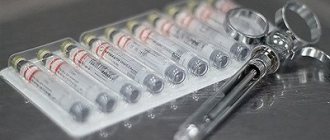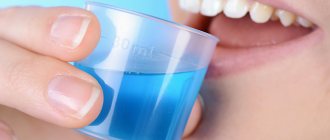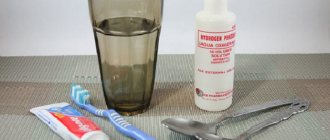Indications for use
Autologous tooth transplantation may be necessary in the following cases:
- tooth loss due to injury;
- the need for removal due to widespread caries (deep type);
- congenital absence of a tooth when there was no germ;
- removal is done for orthodontic purposes, since the tooth affects the malocclusion.
You can find cases of transplanting your own tooth in childhood or adolescence. This is due to the fact that implantation is contraindicated before the age of 18, since the jaw bones are growing and are not yet fully formed. And the survival rate of your own tooth is almost the same as that of an implant, and with a good outcome of the operation, it will grow and develop along with its owner. The work of the orthopedist will move the teeth so that the empty space of the taken donor will not be noticeable.
Disadvantages of autotransplantation
Disadvantages of autotransplantation - in some cases it is difficult to perform, when, for example, the teeth that need to be transplanted have uneven roots, they are strongly curved and in cases where we cannot, for example, pull out a tooth entirely - it is quite difficult, it can be traumatic, in these cases we choose implantation. Another disadvantage is that there is a possibility that the tooth we are transplanting will become ankylosed
. What does “ankylosing” mean? This means that it will simply fuse tightly with the bone tissue like an implant, that is, this is not a super direct minus, but I would like the mobility that is inherent in my teeth to remain, that is, things like this can happen.
But in general, there cannot be any serious life-threatening consequences that will somehow worsen your prognosis in the future, even if you suddenly have to get implants - there is absolutely no such thing.
Who is suitable for autotransplantation and who is not?
In principle, autotransplantation is probably suitable for absolutely all people
, for those who are suitable for both implantation and tooth extraction, if their health is normal, that is, satisfactory and there are no serious chronic diseases, then, accordingly, it can be done at any age, in principle. We probably did it until the age of 50; we didn’t do it later, but I think it’s not very significant, that is, it can be done and there would be a suitable case at any age.
Accordingly, we choose exactly the appropriate case, that is, we choose either we place an implant or transplant a tooth depending on the clinical situation, if it is better to do this, then we will do so, if it is better to place an implant, then we will place an implant, absolutely, that is, everything is individual .
Contraindications for carrying out
First of all, a young patient must be psychologically ready for autotransplantation; it is much easier for adults to take this step. The procedure cannot be performed if:
- there is not enough space between adjacent teeth to restore the void with a dental graft;
- bone diseases can interfere with survival;
- local inflammation in the oral cavity;
- psychological diseases;
- autoimmune diseases, diabetes, cardiovascular problems,
- poor oral hygiene.
Transplantation in dentistry
Modern medicine has made a colossal breakthrough, which has significantly affected the lives of people around the globe. The development of many medical industries has led to the fact that a huge number of previously incurable diseases can be treated or significantly reduced painful symptoms for a long time. However, there are still pathological processes at a certain stage of which it is impossible to restore the normal functioning of an organ or tissue using either therapeutic, surgical or other methods. It is precisely in connection with these circumstances that the question arises of replacing, transplanting an organ or tissue from a healthy organism. This important problem is addressed by a branch of medicine called transplantology.[2]
Dental tissue transplantation is a method of replacing lost bone volume using bone material grafting, which is performed exclusively through surgery.
Since ancient times, people have tried in every possible way to restore lost teeth, as evidenced by various historical finds discovered during archaeological excavations. Already there, in the distant past, people began to make dentures from various natural, mineral and animal materials.
For the first time, dental transplantation was used in Africa, America, and among the peoples of the Middle East. It was there that ancient doctors made the first attempt to install animal teeth into the human oral cavity. A little later, attempts were made to transplant tooth tissue from person to person, mainly from poor to rich. [4]
With the advent of the 18th century, transplantation became widespread throughout the globe. Many scientists tried to carry out similar operations. They used mainly various metals, wood and porcelain as materials. However, their efforts generally ended in wound infection and subsequent rejection of the artificial material.
With the advent of the theory of biocompatibility, the creation of a strict plan for the preparation and conduct of surgical intervention, as well as the invention of antiseptics, minimized the likelihood of various infections, which provided a powerful breakthrough in medicine.
Currently, dental transplantology has reached significant heights. From year to year, scientists invent and improve all kinds of materials to carry out this surgical procedure and reduce all risks of developing pathologies to a minimum.
Where do transplants come from?
There are several types of transplanted material, which have their own advantages and disadvantages over others and are used in an individual case for each patient.
The most reliable option for transplantation is to use an autograft, that is, the patient’s own tissue. This material guarantees full tissue compatibility with the patient’s body and does not cause any allergic reactions. However, to carry out such an operation, a double surgical intervention will be required: bone sampling and, in fact, its transplantation. [7]
Another very good transplant option is the use of allografts, that is, transplantation of bone structures that are taken from another person. But in this case, you can encounter a number of problems. First, you need to find a person who would agree to become a bone tissue donor. Secondly, before the surgical operation, the donor material is thoroughly checked and processed in order to avoid all possible risks of infection and rejection of bone structures. On the other hand, a significant advantage of this type of transplant is the absence of additional surgical interventions for the patient.
In certain cases, dentists may use xenografts. This material is collected from animals, most often a cow. Currently, these grafts are used in very rare cases, due to the high risk of rejection.
And finally, the last type of transplant material is an alloplastic graft - a synthetic material for a bone plate, which is produced chemically based on calcium phosphate. However, this material cannot be completely replaced by bone tissue and, therefore, it is used as a base on which own bone tissue grows over time.
Once again I would like to highlight the point that the choice of one type of transplant depends only on the individual characteristics of the patient and each specific case. So, in order to fill ordinary voids in bone tissue, you can use absolutely any type of material; here the choice is more up to the patient. If it comes to restoring bone tissue by replacing the implanted material with the patient’s tissue, then, basically, preference falls on natural grafts. [5]
Indications for bone transplantation:
Bone tissue is restored using a graft in cases where tooth loss leads to disruption of the normal functioning of the dental system, in particular:
- In case of advanced periodontitis, when severe destruction of dental tissue occurs;
- In case of elimination of various jaw defects after injuries;
- With complete edentia, when the dentition is completely absent;
- During implantation, when there is not enough bone tissue for high-quality implantation;
- In the case when dental prosthetics is impossible due to any anatomical features of the patient.
Contraindications to this surgical procedure:
- Diseases of the blood and hematopoietic organs. Thus, blood clotting disorders make almost any medical intervention impossible due to the development of serious bleeding;
- Oncological diseases. Surgical interventions in the presence of any malignant tumors can lead to tumor metastasis;
- Diseases of the central nervous system;
- Immunopathological conditions. Transplantation is a very serious medical intervention that requires active and intense work of the immune system, and as a result, any deviations from the norm can significantly affect the result of the work done;
- Some diseases of the oral mucosa;
- Pregnancy and breastfeeding;
- Diabetes;
- Pathological bite;
- Contraindications to anesthesia;
- Acute general somatic diseases.
How is tissue transplantation performed?
Bone tissue transplantation is performed under local anesthesia, so the patient will not feel pain or any discomfort during the surgical operation. Painful sensations may occur after medical intervention due to tissue injury. [3]
Stages of dental tissue transplantation:
- Diagnostics. At the first stage of the procedure, a panoramic image of the jaw is taken, which allows you to determine the condition of the bone tissue at the site where the bone block will be transplanted. The condition of the donor's dental structure is also determined.
- The surgical process. After administering local anesthesia, the dentist cuts the gum and carefully separates it from the bone, after which bone material is placed in the place where it is necessary to increase the volume of bone tissue. Moreover, if bone blocks are used for transplantation, they are secured with small screws, and if bone powder is used, the doctor fixes the material using a special membrane. Thus, the area where the transplantation occurs is compacted, and the Sami are provided with faster engraftment of the material. Then the gum is sutured.
- Patient rehabilitation. There is a gradual recovery and complete regeneration of bone tissue. The screws securing the bone blocks are also removed.
Advantages and disadvantages of bone tissue transplantation
Bone tissue transplantation has many positive aspects. The advantages of this branch of medicine include the restoration of normal functioning of the dental system, prevention of the development of bite defects, and most importantly, restoration of the beauty of the smile. In addition, this operation can be performed on children and adolescents if implantation is contraindicated.
However, despite the presence of significant positive aspects, dental tissue transplantation also has several disadvantages. The disadvantages of transplantation include, first of all, the risk of tooth rejection and resorption of the roots of the transplanted material, as well as a very long rehabilitation.
The discovery and development of such a method as bone tissue transplantation has opened up new opportunities for humanity to restore lost dental structures. Further development and improvement of bone transplantation technology will help solve a significant number of dental problems of the population around the world.
How it is carried out: stages of treatment
Autotransplantation requires a tooth with healthy characteristics. For these purposes, a rudiment with a dental follicle, which contains cells ready for growth and development of the root system, works very well. Wisdom teeth are taken to replace 6 and 7; if the front tooth is injured, then any suitable 4.5 can be taken. Often, for upper losses, the donor is the lower teeth, because the lower tissues are restored well.
- Diagnostics. X-rays and CT scans are used to evaluate the condition of the jaw bone and tooth roots;
- Creation of a computer model of the donor tooth. It is printed on a 3D printer based on CT data;
- Extraction of an infected or decayed tooth;
- Treatment of the hole with an antiseptic and antibiotic. If the place has been empty for a long time, the hole is formed surgically;
- Trying on a 3D model of the tooth so that the shape of the hole for the roots fits perfectly;
- Removal of a healthy tooth or germ. One of the important points is to preserve the ligamentous apparatus. The success of donor integration depends on its viability;
- Transplantation of the removed tooth to a prepared site. The time between extraction and installation should be no more than 25 minutes for the donor tissue to function normally;
- Splinting and suturing.
After a few days, the sutures are removed, and after 25 days, the splints are removed. Then the orthopedic correction begins.
Expert opinion
Igor Yurievich Malinovsky
Maxillofacial surgeon, implantologist
Experience: more than 11 years
Transplanting teeth from one area to another is not widespread. The risks of complications are quite high; the tooth may not take root. And it is morally difficult for the patient to experience psychological stress again. Especially considering that these are often children - teenagers, boys and girls. Among dentists there is no clear opinion on this method of restoration. And I am also inclined towards temporary prosthetics, until the time when it will be possible to put reliable and comfortable crowns on the implants. Of course, it is worth mentioning that autologous dental transplantation should not even be considered for older patients.
How much does a tooth transplant cost?
Each dental clinic sets its own prices for autotransplantation. And the price depends on the status of the center, the qualifications of the doctor, the complexity of the operation: whether the removal will take place during the operation or whether the work will take place in an already empty place, the anterior or chewing units will be replaced. But on average, transplanting your own tooth will cost from 25,000 to 45,000 rubles.
It seems that transplanting your own organ to yourself is much cheaper. Since there are no costs for expensive materials: implant, abutment and crown, or the work of a dental technician. “Everything is yours” as they say. But the price is not much lower than implantation.
Efficiency of the procedure
The average period of engraftment of bone blocks is three to six months, sometimes more. It all depends on the individual characteristics of the patient’s body, as well as on the skill of the doctor. If the doctor did everything correctly, the grafted bone soon becomes one with the patient’s own bone. The implant can be securely fixed in it.
However, if the grafting of the bone block was performed poorly and the blood supply to the structure is not normalized, a serious inflammatory reaction may begin. In this case, the graft will have to be removed and the affected area sanitized. Rejection of bone blocks by the body can also occur in the event of biological incompatibility of the implanted materials.
The safety and effectiveness of the operation also depends on the patient’s compliance with the doctor’s recommendations, otherwise complications may develop. Thus, with careless oral care or the traumatic effects of solid food, the protective membrane can be exposed. This will provoke the occurrence of purulent infectious processes that are difficult to treat.
What are the alternatives?
Instead of autotransplantation in dentistry, there is a choice - implantation or prosthetics.
Implantation allows you to install an artificial root into the hole and load it with a prosthesis, a crown. The implant is made of titanium alloy and has a surface treated in a special way, which allows it to take root with 99% success. The manufacturer provides a lifetime warranty on many implants.
Prosthetics will help hide the empty space using an orthopedic design. The bridge will be supported by supporting teeth and perform an aesthetic function.
Doctor's opinion
I cannot agree with some colleagues that autologous tooth transplantation is a good analogue to implantation. In my experience, I more often encountered rejection of a transplanted tooth in patients, regardless of who performed the operation. And then the question arises: why did a person need to undergo surgical interventions if the result is often the same - tooth loss. The psychological and financial burden was unjustified. Implantation of artificial roots is more preferable. The survival rate of titanium pins is high and reaches 99%, and many brands provide a lifetime warranty on implants. Set it and forget it.
To get a consultation











